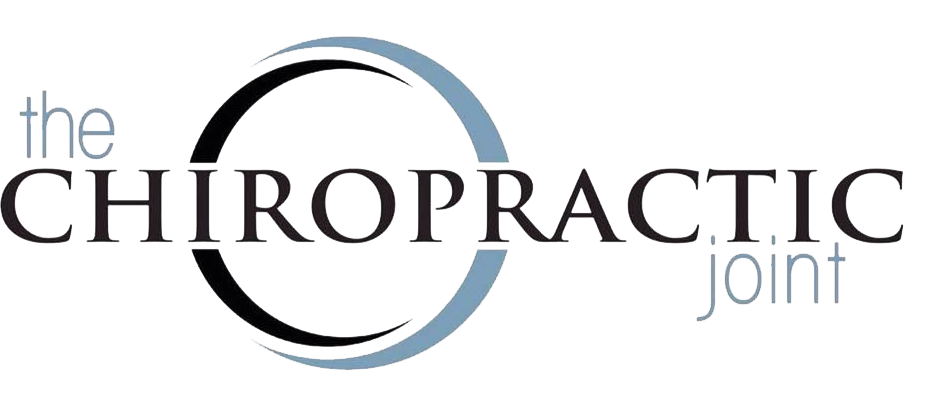Massage Therapy
Please refer to our sister company Mountain Massage
www.flag-massage.com
Massage Form -> Coming Soon
Massage is proudly offered here at the Chiropractic Joint. We provide many types of massage to suit a variety of needs. We have two great massage therapists on staff, both of whom receive great compliments and whose patients enjoy great results.
If you have never received a professional massage, you may have a few questions. Below is a list of frequently asked questions. If you have a question not addressed below please feel free to contact us as we are always happy to help. Ours most frequently asked questions are:
Q. Where Will My Massage Session Take Place?
A: Your massage session will be in a comfortable, quiet, private massage room. During your massage, the room will be dimly lit while relaxing music plays.
Q. Who Will Perform the Massage?
A: A qualified licensed massage therapist will be performing the massage.
Q: Must I Be Completely Undressed?
A:Most massages are traditionally performed with the patient unclothed except for the undergarments. However, how far you disrobe is entirely up to you. You should undress to your comfort level. You will be properly draped during the entire session.
Q: Will The Massage Therapist Be Presented When I Get Undressed?
A: Absolutely not. Your massage therapist will lead you into the room and return within 5 minutes. Meanwhile, you disrobe, relax on the table and cover yourself with the sheet provided. The Massage therapist will knock on your door and ask if you are ready. Once you give the massage therapist permission, they will enter and begin the session.
Q: Will I Be Covered During The Session?
A: The massage therapists are well trained to properly drape you at all times to keep you warm and comfortable. Only the area being worked on will be exposed.
Q: What Parts Of My Body Will Be Massaged?
A: The Massage therapist will discuss the areas of concern with you. She will then focus on those muscles as well as other areas that may be contributing to those problems. She will also work on other parts of the body that she feels need attention. A typical session will include the neck, shoulders, arms, back, legs, feet and hands. You will not be worked on or near your genitals or breasts (females).
Q: Will Massage Oils Be Used?
A: We use BioTone Dual Purpose Cream. Massage oils are also used, depending on what technique the massage therapist plans on doing with you.
Q: What Will The Massage Feel Like?
A: Most massages start out with long, gentle strokes (Swedish massage) to help your muscles relax. Once your body relaxes, the pressure will gradually be increased to help relieve muscular tension. If you feel any discomfort, please let your massage therapist know as soon as possible; massages are most effective when your body relaxed and not resisting.
Q: How Long Will The Session Last?
A: Our massages range from half an hour to one-and-a-half hours. Most patients prefer the one hour massage. Within the hour, you are given five minutes at the beginning and five minutes at the end for unclothing and clothing. The half hour massages are usually used for partial massages such as neck and upper back/shoulders or low back and legs. One and half hour massages are primarily used for pure relaxation.
Q: What Should I Do During The Massage Session?
A: Make yourself comfortable. The massage therapist will instruct you on what you need to do. Some people like to close their eyes and completely relax and some like to talk throughout the session. Feel free to ask your massage therapist any questions you may have, as they are always more than happy to answer them.
Q. How Will I Feel After The Massage Session?
A: Most people feel very relaxed, to the point of wanting to take a mid-day nap. Some, depending on how much toxins are stored in their body, may feel sick initially and then feel better in a couple of days. Since many toxins are released during a massage, it is crucial to drink plenty of water afterward.
Q. What Are The Benefits of Massage?
A: Massage can help with chronic muscular tension and pain, increase joint flexibility, improve posture, increase blood circulation, reduce mental and physical fatigue and stress, promote faster healing of injured muscular tissue, and reduce blood pressure. It can also help promote better sleep, improve concentration, and reduce anxiety.
Q: Are There Medical Conditions That Would Make Massage Inadvisable?
A: Yes. There are a few medical conditions that are contraindicated to massage therapy. It is important to receive an examination from your chiropractor to eliminate possible contraindications. There is also a form/checklist below. You will be asked to fill it out and give it to the chiropractor or massage therapist in order to make sure you have no contraindications that would cause a message to be unsafe for you.
Q: Do We Tip The Massage Therapist?
A: Tips are never required but always appreciated, particularly if you feel your therapist gave an exceptional massage and exceeded your expectations.
Q: How Frequently Should I Come For A Massage?
A: Frequency depends on your condition. It could range from once every couple of months to once a week. After reviewing your condition, your chiropractor or massage therapist will develop a recommended treatment plan specifically for you.
Q: Does My Auto Injury Or Workers Comp Cover Massage?
A: In most cases, if the chiropractor determines that massage is medically necessary, the costs are covered.
Q: Will my health insurance cover massage?
A: That depends on your insurance carrier and policy. We will verify your health insurance benefits and determine whether or not massage is covered. We will always let you know before scheduling you for a massage.
Q: Are There Different Types Of Massages?
A: Absolutely. Please see below for the different types of massages offered here at The Chiropractic Joint.
Deep Tissue Massage
Deep tissue massage targets the deeper layers of muscle and connective tissue. The massage therapist uses slower strokes, or friction techniques, across the grain of the muscle.
Deep tissue massage is used for chronically tight or painful muscles, repetitive strain, postural problems, or recovery from injury. People often feel sore for one to two days after deep tissue massage.
Trigger Point Therapy
Trigger point therapy is a non-invasive modality for the relief and control of myofascial pain and loss of functions. Treatment consists of trigger point compression, massaging the muscles, passive stretching, and a series of corrective exercises.
Structural Integration
Based on the work of Dr. Ida P. Rolf, structural integration is based on the idea that the entire structural order of the body needs to be realigned and balanced with the gravitational forces around a central vertical line representing gravity’s influence. Therapeutic intervention is directed toward the myofascial system--the ligaments, muscles, tendons, and surrounding connective tissues. A practitioner of structural integration has a ten-session cycle of work, in which different angles and degrees of physical pressure are used to stretch and guide fascia to a place of easier movement. The process is not intended to cure symptoms; its goal is to create a more resilient, higher-energy system, free of inhibitions due to past trauma.
-Massagetherapy.com
Swedish Massage
Swedish Massages consist of long smooth strokes, kneading, and circular movements on superficial layers of muscle using massage lotion or oil. Swedish massage therapy can be very gentle and relaxing. See the video below for an example of a Swedish massage.
Hot Stone Massage
Heated, smooth stones are placed on certain points on the body to warm and loosen tight muscles and balance energy centers in the body.
Myofascial Release
Myofascial release is the three-dimensional application of sustained pressure and movement into the fascial system in order to eliminate fascial restrictions and facilitate the emergence of emotional patterns and belief systems that are no longer relevant or are impeding progress. Upon locating an area of fascial tension, gentle pressure is applied in the direction of the restriction. Myofascial release is an effective therapeutic approach in the relief of cervical pain, back pain, fibromyalgia, scoliosis, neurological dysfunction, restriction of motion, chronic pain, and headaches.
-Massagetherapy.com
Sports Massage
Sports massage is designed to enhance athletic performance and recovery. It helps establish blood flow and warm up muscles. It can also calm the nervous system and begin the process of flushing toxins and waste products out of the body. It can reduce recovery time, allowing an athlete to resume training much sooner than rest alone would allow. When an athlete sustains an injury, qualified massage therapy can often speed and improve the quality of healing.
Pregnancy or Prenatal Massage
Pregnancy massage can reduce pregnancy discomforts and concerns and enhance the physiological and emotional well-being of both mother and baby.
Here are some videos of massage therapy:
Benefits Of Massage
Examples of Massage
What is Deep Tissue Massage?
Example of Sweedish Massage



